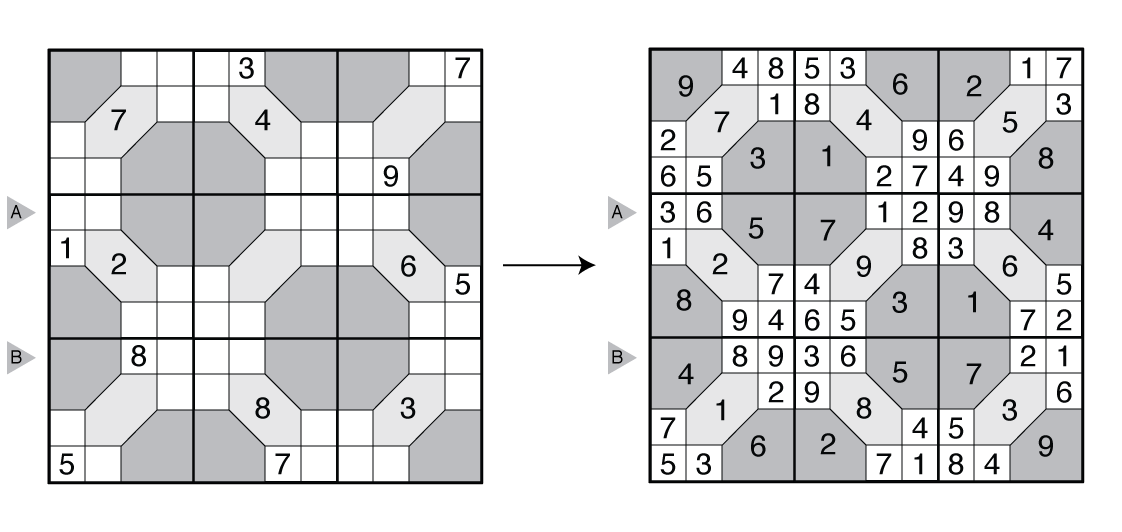Tile Sudoku R&I

Rules: Standard Sudoku rules (insert a number in the indicated range into each cell so that no number repeats in any row, column, or bold region). Some cells (typically shaded) belong to multiple rows and/or columns.
Answer String: Enter the row/column marked “A”, followed by a comma, followed by the row/column marked “B”. Rows are entered from left to right and columns from top to bottom. This example has the key “365712984, 489365721”.
(Brief) History of Tile Sudoku: Descended from Sudoku and grid variations. The unusual grids of Tile Sudoku likely were created for other puzzle styles before being applied to Sudoku. This genre first appeared in international competition at the 2nd World Sudoku Championship in Prague under the name “Parquet”.
History of this example: This Tile Sudoku was written by Thomas Snyder for the 2011 US Sudoku Team Qualifier.
Sources for Tile Sudoku: Follow this link for Tile Sudoku puzzles on this website. If you are new to this puzzle type, here are our easiest Tile Sudoku to get started on. More Tile Sudoku puzzles can be found in Mutant Sudoku, and also in future titles by Grandmaster Puzzles.
Design rules for contributors: A Grandmaster Tile Sudoku will have a unique solution that can be reached by logic alone. Generally, a Grandmaster Tile Sudoku has a symmetric layout of numbers and tiled regions or a visually interesting theme that does not need symmetry.
